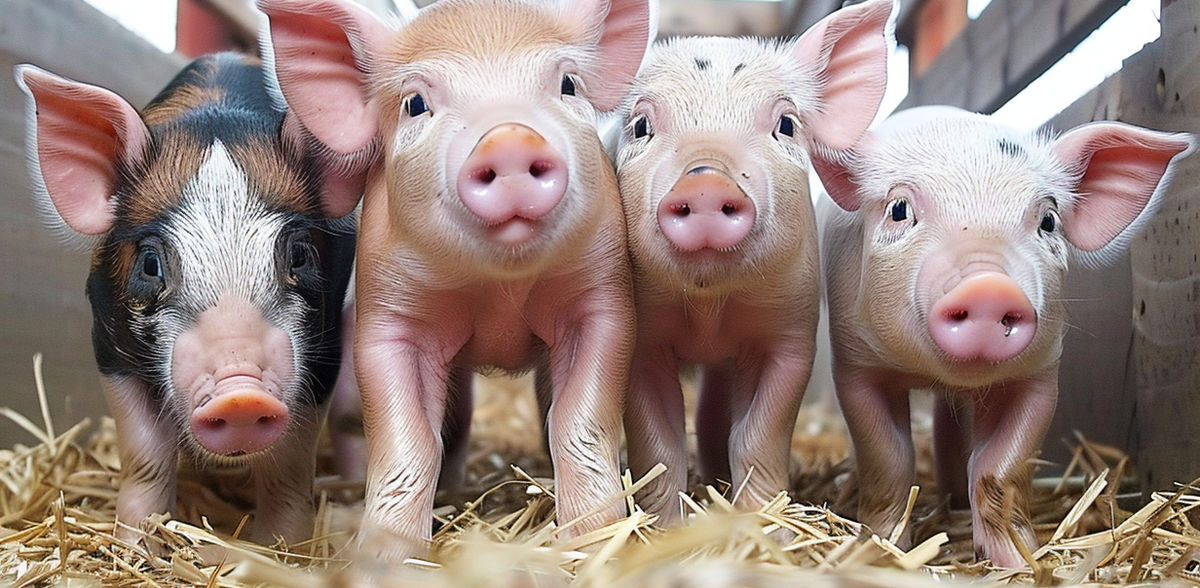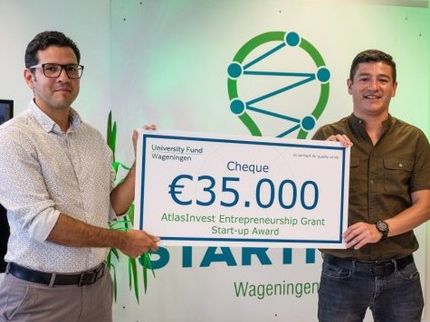Challenges and future prospects for the pig industry
Advertisement
Stefan Müller from Suisseporcs is convinced that Swiss pork will continue to be eaten in the future despite the downward trend in consumption and the challenges facing the industry. The breeding and producer association tracks trends using various monitoring methods and uses them to develop strategies for market adjustments and stronger businesses in the pork industry.
Pork consumption in Switzerland is declining. "Pork consumption in Switzerland is falling by 1 to 2 percent annually; young consumers in particular are eating less pork," says Stefan Müller, Managing Director of Suisseporcs. Nevertheless, he sees a positive future for domestic pork: "We produce an excellent food product on the doorstep of our consumers."
Suisseporcs represents the interests of around 2,500 professional pig producers and works actively in the areas of politics, marketing, consulting, services, pig health and market organization to strengthen the industry.
The association is organized on a grassroots democratic basis; important decisions are made by delegates or board members. This has a slowing effect on processes. This makes it all the more important to draw up forecasts at an early stage so that Stefan Müller and his team can submit proposals for change to the relevant committees in good time for decision-making.
Data collection and monitoring to identify trends
Suisseporcs monitors the development of production and consumption very closely using various measures. The market figures in Switzerland are relatively easy to collect due to the protected market. "We have very few imports and no exports. We know what is slaughtered in our abattoirs. We know these figures. We have comparative figures for the previous year."
Another measuring instrument is the data reports from the farms and marketers - a forecasting system. However, this is currently only reliable for a period of 15 weeks, but still helps with planning, says Stefan Müller. "With every trade, i.e. when the fattening hunters go from the breeding farm to the fattening farm, a report is made by the trade. We receive these figures anonymously on a weekly basis."
And Stefan Müller emphasizes what Suisseporcs is concerned about: "Are we running into a pig crisis again? Do we need to plan relief measures? We want to answer questions like these. That's why we are currently working with the HAFL University of Applied Sciences on how we can set up a more comprehensive monitoring system to better predict periods of overproduction."
"We have to accept that the market is changing and prepare and adapt to this in a targeted manner. If we succeed in doing this, I am convinced that we will still be able to buy Swiss pork at a fair price in the stores tomorrow."
he demand for pork is continuously declining
Due to the pig cycle and the free market, the pig market in Switzerland has seen very good and very bad economic times. The 2022/2023 crisis - an overproduction of pork - meant that pork halves had to be exported to Germany at a loss. The aim was to avoid animal welfare problems on the farms.
Despite successfully avoiding an escalation, Suisseporcs continues to face the challenge of better regulating the market in light of declining pork consumption. And thus prevent future crises. "Not an easy task," says Stefan Müller. "There are different opinions on market regulation among our 2,500 members, from those in favor of a completely free market to those calling for better control of production. At our delegates' meeting in May, the producers will decide on future strategies."
The decline in pork consumption is also leading to the closure of farms or a switch to other branches of production. But this is not so easy, as Stefan Müller explains: "Pig farms face the challenge that the existing stables cannot simply be converted for other purposes, for example for poultry production or cattle farming. At best, a barn can be converted for mushroom or fish farming." It does not make sense to demolish barns that have not been amortized; converting production is a major challenge for licensing reasons, depending on the canton.
Social trends and animal welfare
The continuing trend towards less meat consumption in industrialized countries is affecting the pig industry in particular. There is a major conflict of objectives between the desire for greater animal welfare and consumers' willingness to pay. Although they want more animal-friendly pig farming, which also incurs additional costs, e.g. due to barn construction and additional work, they are not very willing to bear these costs. "Label means multi-area systems with littered lying areas and exercise areas," says Müller. "Migros has now announced that it will reduce the proportion of label pork because demand at the store counter is falling."
Communication is a major challenge: "How can we show consumers that animal-friendly husbandry incurs higher costs and that this is reflected in the product price? This is where we need to pick people up and break the trend."
Stefan Müller adds: "There is no decline in processed meat, e.g. charcuterie products, while the consumption of traditional fresh meat such as cutlets, steaks and schnitzels is falling. This is where processors in particular could take action. However, there is still potential for innovation in the development of new meat products, especially products for young consumers."
Feed trends and developments
An estimated 75% of Swiss pig farmers buy complete feed from the compound feed industry. They use 150,000 tons of by-products from the food industry. This includes cheese dairy waste, potato waste and waste from bread grain production. In addition, there are around 1.5 million liters of bulkheads from cheese production. Stefan Müller explains: "There are plans to thermally treat K3 waste, i.e. animal waste from abattoirs, and use it as animal feed in order to save soy and close nutrient cycles."
These are large quantities of protein that currently end up as waste. Specifically, poultry waste would be thermally treated, sanitized and fed to pigs in powder form. He continues: "This would be entirely in line with a sustainable circular economy. However, such a project poses a number of challenges in terms of consumer acceptance and logistics."
The pork remains
Stefan Müller has a clear idea of how the pig industry will develop in the future and what trends are emerging. "Thanks to its proximity to consumers and its focus on sustainability, Swiss pig production has a chance of asserting itself on the protected market. The goal of covering 90 percent of domestic consumption remains in place. However, the adjustment to changing eating habits and the - unnecessary - political pressure on livestock farming will further reduce demand and thus lead to fewer pig farms," he says, adding: "The trend is towards fewer but stronger farms. This is because young pig farmers are showing great interest and commitment despite the difficult market situation. They are continuing their education, which is leading to professionalization. They are very passionate about their pig farming."
Despite the decline in consumption, Stefan Müller is optimistic: "We have to accept that the market is changing and prepare and adapt to it in a targeted manner. If we succeed in doing this, I am convinced that we will still be able to buy Swiss pork at a fair price in the stores tomorrow - provided the market remains protected."
Note: This article has been translated using a computer system without human intervention. LUMITOS offers these automatic translations to present a wider range of current news. Since this article has been translated with automatic translation, it is possible that it contains errors in vocabulary, syntax or grammar. The original article in German can be found here.


























































